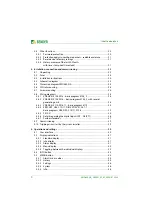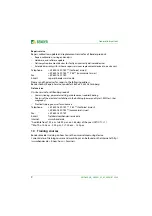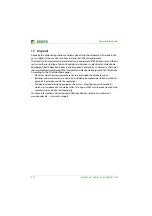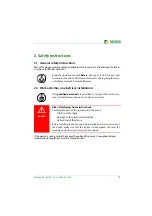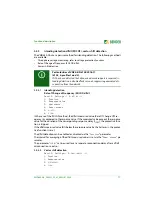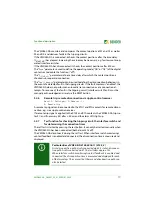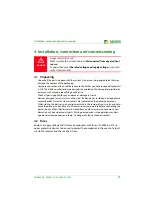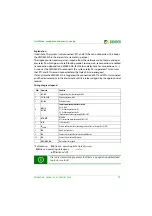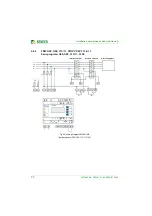
Functional description
18
VMD460-NA_D00001_05_M_XXEN/01.2020
The vector shift detection detects phase displacements (vector shift) in the network
voltage.
if the ° measured value exceeds the response value, the protective function is tripped.
After successful connection, the vector shift detection is blocked or suppressed for the
duration of the delay time t
(START-UP)
, so that transient phenomena caused by connec-
tion do not trip the protective function.
The function can be set to "off" via the "
Function
" parameter or the behaviour of the
vector shift detection can be set:
•
"L1", "L2", "L3": The protective function monitors the set phase
•
"single": The protective function monitors each phase separately (OR operation)
•
"all": A vector shift must occur simultaneously on all (three) phases
The "
t(ON)
" parameter can be used to set a separate reconnection delay after a vector
shift disconnection.
3.4.4
Unbalance detection
Menu: 3. Settings-> 5. Unbalance:
1. Function
2. Response value
3. Hysteresis
4. t
(OFF)
On one hand, the unbalance is determined separately on the basis of the phase voltag-
es among each other and on the other hand, on the basis of the line-to-line voltages
among each other. If the unbalance measured value exceeds the set response value for
the duration of the delay time (t
(OFF)
), the protective function is tripped.
If the unbalance measured value falls below the response value by the hysteresis, the
protective function is reset. The unbalance detection can be enabled or disabled via the
"
Function
" parameter.
3.4.5
Monitoring of the tripping circuits and interface switches by means of
contact feedback
Menu: 3. Settings-> 8. Dig.in.:
1. Mode
2. t
(START-UP)
3. Fault memory
The digital contacts D1 and D2 can be used to monitor the tripping circuits
(K1 -> interface switch 1 -> D1 and K2 -> interface switch 2 -> D2).
If "1AC" is set as coupling, "L1" is automatically monitored, even
though the "Function" parameter still displays the last value set.

